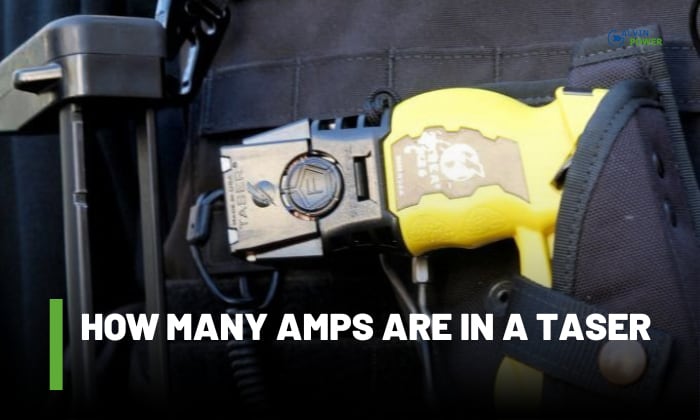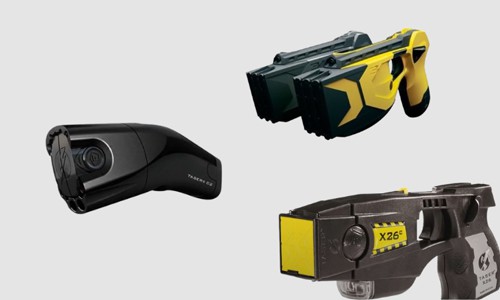A TASER is often touted as a less lethal way for police to apprehend suspects. They are also becoming a popular method of self-defense for the public. But a lot of people still have questions about the safety and dangers of using a TASER, especially its electrical shock strength.
How many amps are in a TASER? A TASER can deliver 2-4 milliamps, depending on the unit.
Table of Contents
Taser’s Working Principle
Technically, a TASER can operate like a stun gun. A stun gun voltage and amperage are supplied by batteries loaded to the device and produces an arc between the two probes. A TASER, however, can deliver a shock even at a distance, unlike a stun gun.
A TASER works by delivering a small amount of current with a large voltage. When it is triggered, it launches two probes that hit a target at different areas. This allows the current to flow from one probe to the other through the target.
The electrical current of a TASER measures between 2 to 4 milliamps and is enough to cause involuntary muscle contractions to the areas where the current will flow and immobilize the target. The involuntary muscle contractions stop when the TASER stops.
The standard TASER voltage, like the TASER M26 model, can reach up to 50,000 volts when generating the arc. The high voltage can deliver the safe current even through thick clothing or body armor.
While the TASER strength is lower than that of a stun gun (which is around 100,000 volts), the TASER’s high quality probes and its ability for long-distance shocks make it a superior self defense equipment.
Newer models like the TASER 10 can achieve better neuromuscular incapacitation at 1,000 volts compared to the TASER 7 voltage of 50,000. However, it cannot deliver the current enough through thick clothing, so the probes must reach the skin.
Safety Implications and TASER Amperage
A TASER is considered a less lethal way of apprehending a suspect. Still, this device has its own sets of dangers.
TASER amperage is lower than the lethal 100 milliamps. However, TASERs have a risk of causing ventricular fibrillation, raising risks of cardiac arrest if the TASER’s current crosses the heart.
Also, TASERs lock up the target’s muscles and can cause the suspect to trip or fall down. This can lead to injuries or even unconsciousness.
That’s why some states require TASER users to have training on using one. This training includes the basics, proper use, and risks of deploying this electronic equipment.
TASER users should also avoid the head, chest, neck and groin of the suspect when shooting the TASER. If the probes do hit these critical areas, the probes should be removed by paramedics.
Electrical specifications for TASERS are also different for civilians and law enforcers. TASERs for law enforcement have 5-second cycles every time the trigger is pulled. TASERs for civilians’ self defense run for 20 seconds, giving enough time for the victim to run and escape.
Frequently Asked Questions
How many amps are lethal?
A lethal shock can be as low as 100 milliamps through the body. However, TASERs can lead to ventricular fibrillation, even with their small amp rating.
How strong is a police TASER?
Most police TASERs like the TASER 7 have an average voltage of 50,000 volts. But the new TASER 10 has only 1,000 volts and is promoted to deliver TASER 7 amperage. Police TASERs can shock for 5 seconds per cycle.
Is 50,000 volts deadly?
It’s not the voltage that technically kills, but the current. The TASER may have a high voltage to get through thick clothing, but the conversion from 50,000 volts to amps amounts to as little as 2-4 milliamps. 2-4 milliamps are far from the lethal current level.
Conclusion
TASERs are common among law enforcement. The high voltage of these devices can deliver a small current through a suspect with a very low risk of death, and their benefits are clear if you understand how many amps are in a TASER.
These handheld tools can be used safely with training and proper forms. These guarantee the TASER as an important option for self defense and law enforcement.

I am Edwin Jones, in charge of designing content for Galvinpower. I aspire to use my experiences in marketing to create reliable and necessary information to help our readers. It has been fun to work with Andrew and apply his incredible knowledge to our content.



